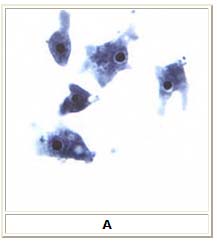Naegleria infection laboratory findings
|
Naegleria Infection Microchapters |
|
Diagnosis |
|---|
|
Treatment |
|
Case Studies |
|
Naegleria infection laboratory findings On the Web |
|
American Roentgen Ray Society Images of Naegleria infection laboratory findings |
|
Risk calculators and risk factors for Naegleria infection laboratory findings |
Please help WikiDoc by adding more content here. It's easy! Click here to learn about editing.
Editor-In-Chief: C. Michael Gibson, M.S., M.D. [1]
Overview
In Naegleria infections, the diagnosis can be made by microscopic examination of cerebrospinal fluid (CSF). A wet mount may detect motile trophozoites, and a Giemsa-stained smear will show trophozoites with typical morphology. Confocal microscopy or cultivation of the causal organism, and its identification by direct immunofluorescent antibody, may also prove useful. An increasing number of PCR-based techniques (conventional and real-time PCR) have been described for detection and identification of free-living amoebic infections in the clinical samples. Such techniques may be available in selected reference diagnostic laboratories.
Laboratory Findings
Microscopy
In Naegleria infections, the diagnosis can be made by microscopic examination of cerebrospinal fluid (CSF). A wet mount may detect motile trophozoites, and a Giemsa stained smear will show trophozoites with typical morphology. Confocal microscopy or cultivation of the causal organism, and its identification by direct immunofluorescent antibody, may also prove useful.
Shown below is an image of Naegleria fowleri trophozoites, cultured from cerebrospinal fluid. These cells have characteristically large nuclei with a large, dark staining karyosome. The amebae are very active and extend and retract pseudopods.

Molecular Diagnosis
Real-Time PCR
A real-time PCR was developed at CDC for identification of Acanthamoeba spp., Naegleria fowleri, and Balamuthia mandrillaris in clinical samples. This assay uses distinct primers and TaqMan probes for the simultaneous identification of these three parasites.